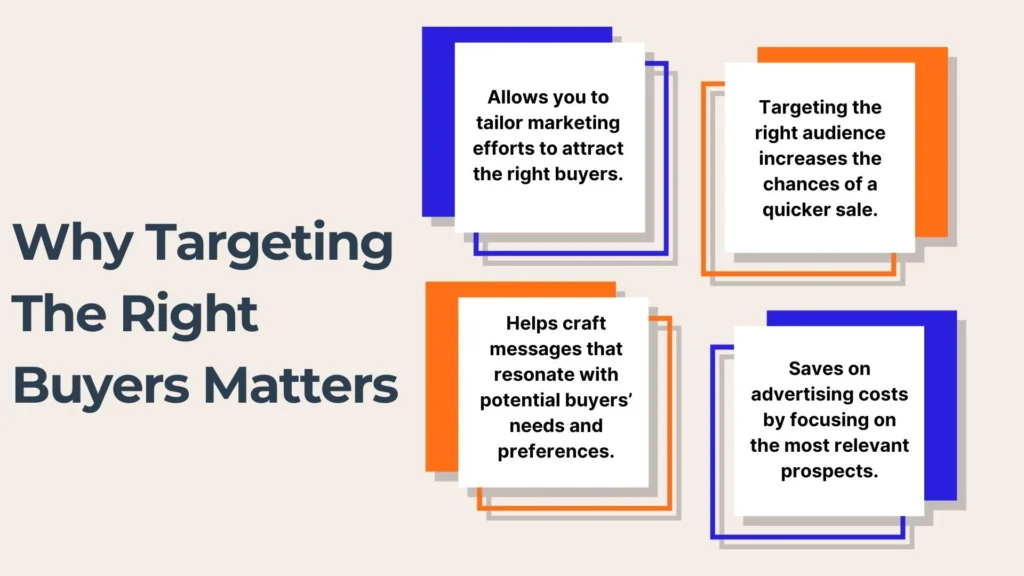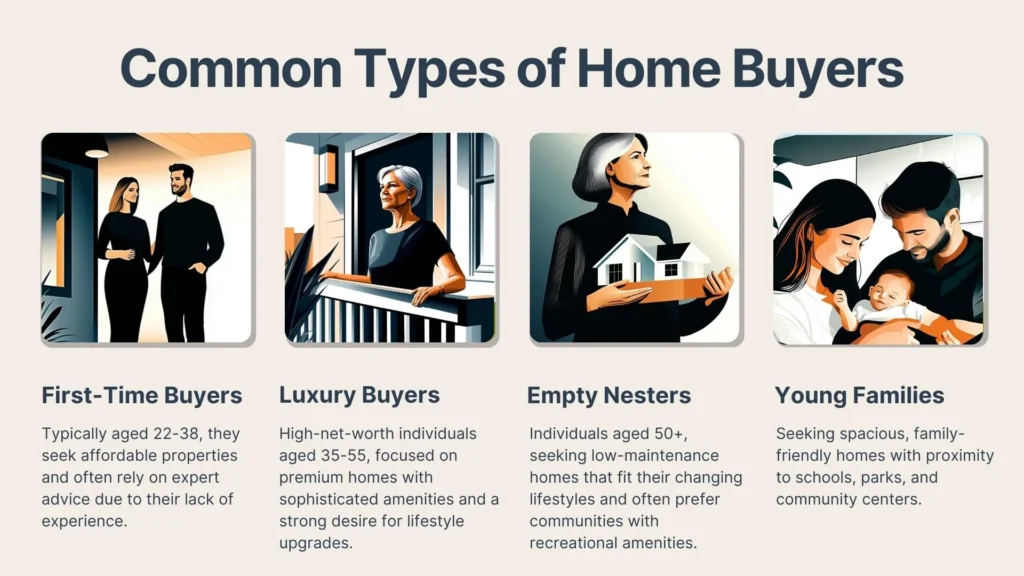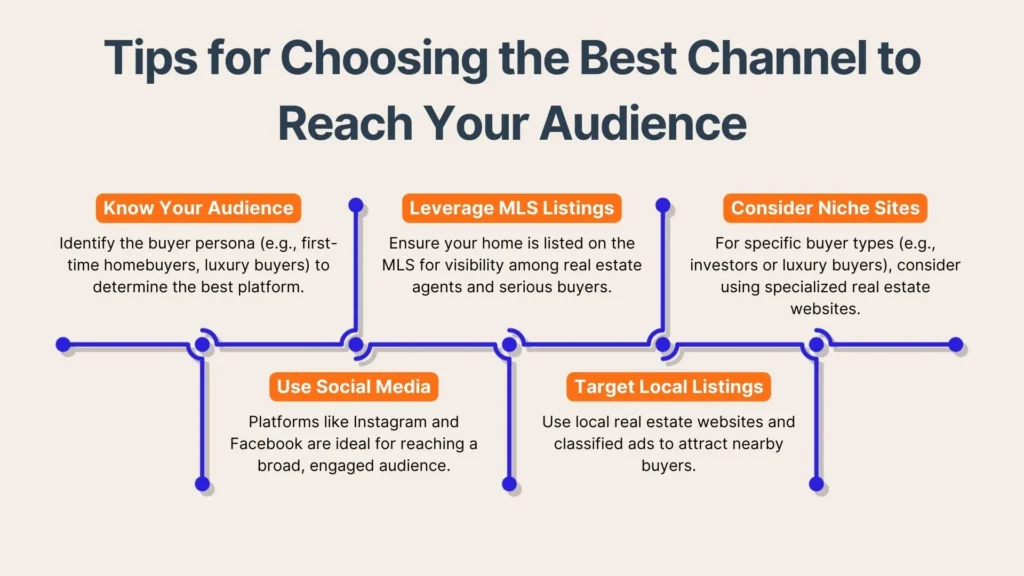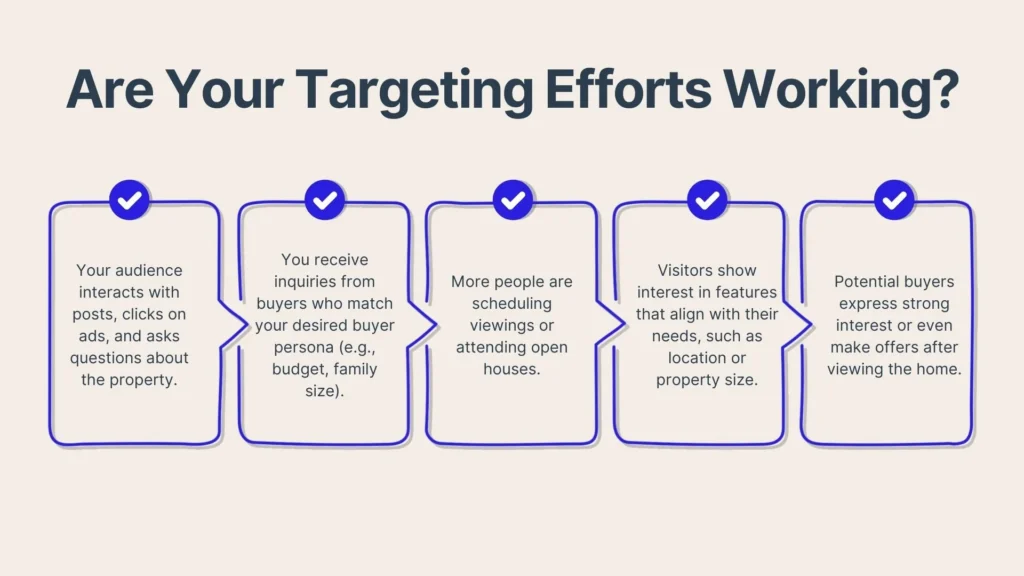Selling a home successfully isn’t just about listing it and waiting for buyers to come to you—it’s about understanding who your ideal buyers are and how to reach them. Identifying who your buyers are and crafting marketing that resonates with them can make all the difference in a quick and successful sale
But how do you identify your target audience and effectively engage them? In this article, we’ll walk you through audience targeting for real estate, giving you valuable insights and actionable steps to take your marketing to the next level.
Why Is Audience Targeting Important for a Home Sale?
Targeting the right audience is an indispensable skill in real estate marketing and significantly influences the success of home sales. In a crowded marketplace filled with competing advertisements, identifying a specific target audience allows first to develop focused and carefully planned marketing strategies.
Tailoring your marketing to your audience’s needs boosts your chances of attracting quality buyers, resulting in faster sales and better prices. Buying a home is a big, emotional moment for many, so forming a connection with your audience is key.

How to Identify Your Target Audience
For FSBO sellers, figuring out who your target buyers are and what matters to them is a game changer. Understanding who your buyers are and what matters to them helps you design marketing that speaks directly to their needs. This saves you time and effort and boosts your chances of selling your home quickly while leaving a positive impression on buyers.
After identifying your target audience, it’s time to explore the local market they’re shopping in. Understanding these trends will help you fine-tune your strategy and connect with buyers more effectively.
Analyzing Local Market Trends
Local market trends provide a roadmap for strategy development. Reviewing demographic data from homebuyers like income, household size, and age sheds light on their desires and needs.
An example of a rising trend is the rise of remote work, it has shifted demand toward homes with dedicated office spaces and quieter locations. By understanding these trends and tailoring your marketing efforts, you can better meet buyer needs and improve your chances of closing sales. Staying informed about local market dynamics helps you maintain a competitive edge in the real estate landscape.
Identifying Buyer Personas
When identifying potential clients, creating detailed buyer personas helps you understand the motivations and challenges of different audience segments. These personas should include demographics, lifestyle preferences, and financial capabilities. Here are some examples of real estate buyer personas:
- First-Time Home Buyers: Typically aged 22-38, they seek affordable properties in reachable locations, often valuing expert advice due to their lack of experience in home buying.
- Luxury Home Buyers: Usually high-net-worth individuals aged 35-55, look for sophisticated homes with premium amenities and are often motivated by lifestyle aspirations, such as providing the best for their families.
- Relocating Professionals: These buyers often prioritize proximity to work and schools, seeking properties that provide comfort and convenience as they transition to a new area.
- Investors: Individuals who focus on multiple properties for resale, and maximizing returns. This type of buyer may prefer low commission rates and quick transactions.
- Empty Nesters: Typically aged 50+, they seek low-maintenance homes that accommodate their changing lifestyles, often looking for communities with recreational activities.
- Young Families: They prioritize spacious homes in family-friendly neighborhoods with good schools and parks, focusing on features that enhance their children’s quality of life.

Leveraging Social Media Insights
In the present climate, social media platforms provide a wealth of data that can be incredibly helpful for audience targeting. Analyzing engagement metrics and demographic information reveals which content resonates the most with potential buyers. This data informs future campaigns, enabling sellers to connect more effectively with their audience.
What Are the Best Channels to Reach Your Audience?
Knowing which channels are the best to connect with your audience will streamline effective marketing. In today’s digital world, various platforms offer unique opportunities to engage a diverse set of potential buyers. Social media channels like Facebook and Instagram allow for targeted advertising and community interaction, while email marketing enables personalized communication directly with interested prospects.

Social Media Platforms
With millions of active users on platforms like Facebook and Instagram, social media platforms are powerful tools for real estate marketing. These platforms allow precise targeting based on demographics, interests, and behaviors. Sellers can create visually appealing ads showcasing properties while leveraging advanced targeting options to reach specific buyer segments.
Real Estate Websites
Real estate websites play a sizeable role in enhancing visibility among potential buyers. Established platforms like Zillow and Realtor.com attract users actively searching for properties, making them ideal venues for showcasing listings.
Leveraging tools like Zillow's Zestimate can offer buyers an initial estimate of property values, which clears the way for informed discussions about pricing. This data-driven approach enhances transparency and builds trust with potential clients. With the right mix of compelling images, interactive tools, and factual data, real estate experts can create more engaging platforms and convert visitors into clients.
Email Marketing Campaigns
Email marketing continues to be a powerful tool for targeted outreach. You can segment your email lists according to buyer personas or previous interactions, allowing you to send personalized content that addresses specific needs. This may include property updates, market insights, or helpful tips for first-time buyers and investors.
How to Create Appealing Content for Your Audience
The value of being eye-catching will always be present in any form of marketing. After all, appealing content is essential for capturing the attention of your target audience and driving engagement.
To effectively reach out to potential buyers, your content should be informative and visually compelling. One of the most impactful ways to enhance your content is by incorporating high-quality images and graphics that resonate with your audience's preferences and expectations.
High-Quality Images
High-quality images serve as visual anchors that complement your written content, making it more engaging and easier to digest. They can evoke emotions, illustrate complex ideas, and break up text to create a more dynamic reading experience. By incorporating striking visuals, you enhance the aesthetic appeal of your content and reinforce your message, crafting it to engage your audience effectively.
Professional photography is critical for creating a strong first impression. High-quality images highlight a property’s best features and attract more online attention. Listings with stunning visuals are shared more frequently and achieve higher engagement.
Detailed Property Descriptions
Engaging property descriptions enhance visuals by highlighting features, amenities, and unique selling points. They create a narrative that allows potential buyers to imagine themselves in the home. Emphasizing lifestyle benefits—such as closeness to schools, parks, shopping areas, and public transport—greatly enriches the listing’s appeal. To maximize impact, customize descriptions for specific buyer personas. For example, targeting young families, spotlight features like large backyards, local playgrounds, and top-rated schools. Conversely, when appealing to retirees, focus on low-maintenance options, accessibility features, and nearby leisure activities.
Virtual Tours
Offering a virtual tour will allow buyers to experience properties remotely in an immersive way. This is particularly convenient for those who can't visit due to distance or scheduling conflicts. Providing virtual tours shows your commitment to innovation and helps drive buyer interest.
How to Measure the Success of Your Targeting Efforts
To gauge the effectiveness of your audience targeting, it’s essential to analyze key performance metrics. One of the most telling indicators is website traffic. By tracking the volume and behavior of visitors coming to your site, you can determine if your targeting strategies are connecting to the right audience. Analyzing website traffic provides clear insights into how efficient your targeting efforts are at converting and helps you refine your approach for even better results.

Analyze Website Traffic
Understanding your website traffic is important to measuring the success of your marketing efforts. Google Analytics and similar apps can track visitor demographics, behavior, and conversion rates. For example, identifying which channels gather the most engagement, such as paid search or organic traffic helps you refine your approach for better results.
Monitoring Engagement Rates
Engagement rates are a powerful metric for evaluating the success of your social media posts and email campaigns. High engagement rates such as likes, shares, comments, and click-throughs provide clear feedback on how well your content resonates with your audience.
Make the most of engagement rate tracking by observing key performance indicators (KPIs) over time. Watch for trends in audience behavior, such as which posts spark the most interaction with the buyers.
Inquiries and Showings
Increased inquiries and showing requests reflect successful targeting. These metrics indicate your messaging is reaching the right audience at the right time.
Tracking the number of inquiries allows you to assess how well your listings attract interest. A higher volume of inquiries suggests your property descriptions and visuals are compelling. Similarly, an uptick in showing requests indicates that potential buyers are motivated enough to take the next step and view the property in person.
Conclusion
Reaching the right audience is essential for a successful home sale, and having high-quality images, detailed property descriptions, and virtual tours are just some of the tools you can use to make that happen. But you can take it a step even further by using Propbox’s tailored marketing tools, including virtual tours and high-quality images.
Let Propbox streamline your sale while maximizing your property’s visibility and skipping the hefty 6% realtor fees. Save time, engage effectively, and start today with Propbox to turn your listing into a sold home!
